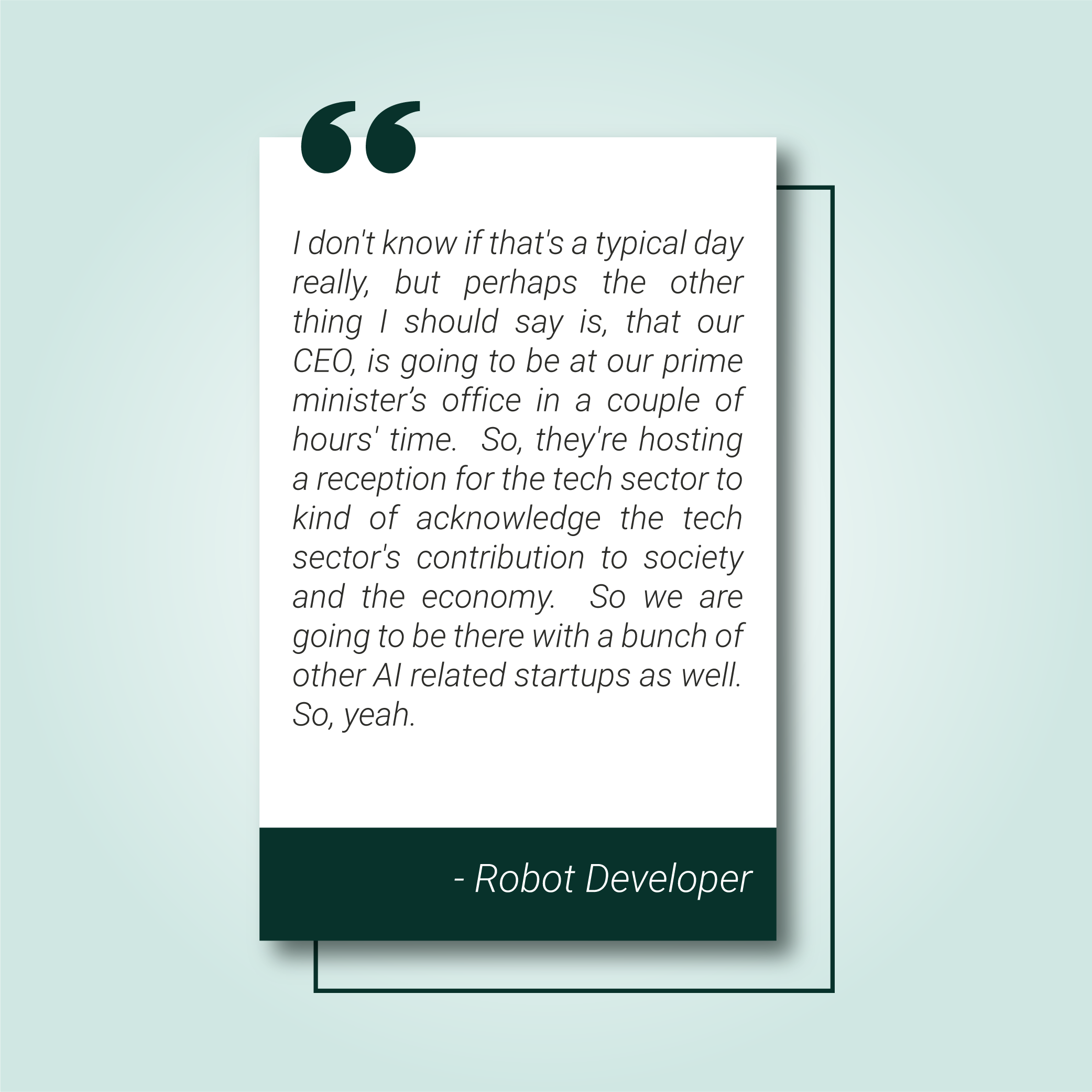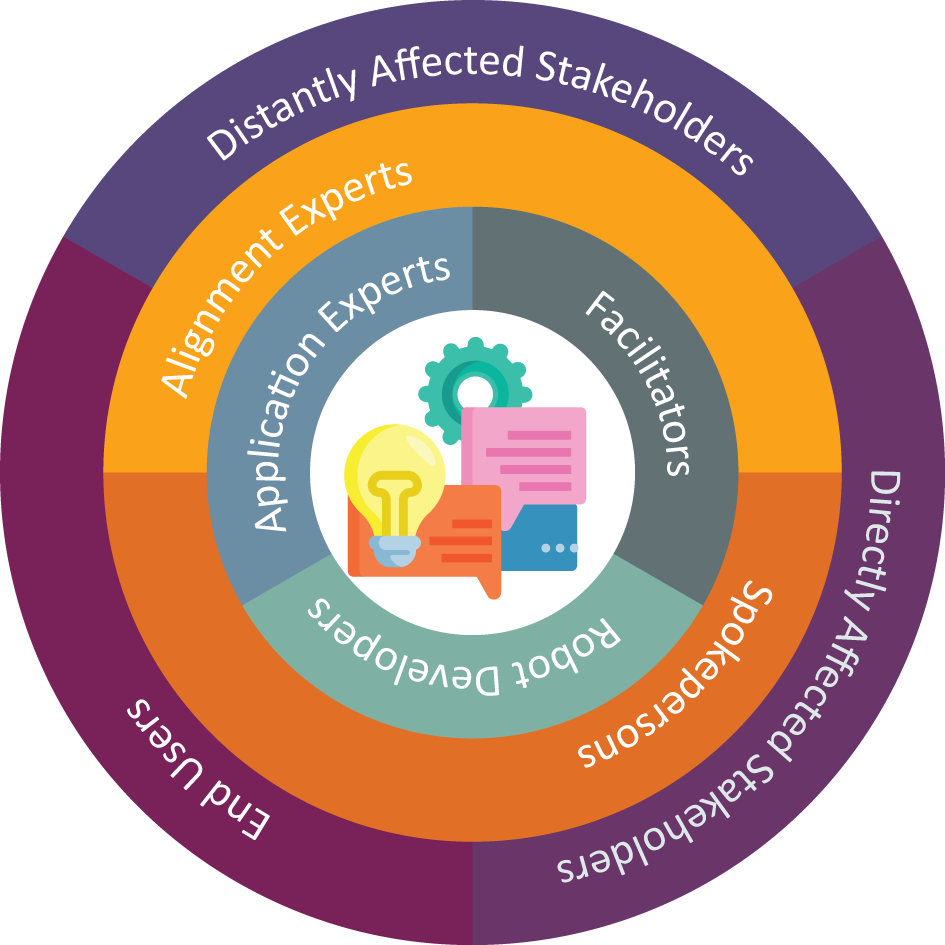Collaboration in the Inner Circle
What is the impact of interdisciplinarity in research and development?
Click on the arrows, or the dots, to navigate. You can expand the content to full screen by clicking on the bottom right corner.
Robot design processes, and the community of robot makers in general, can gain by a raised awareness of why they may benefit from collaboration with end-users, direct and distant affected stakeholders.
It will improve the chance of making responsible and ethical robots, because a closer collaboration will give access to valuable everyday life experience.


Human Proximity Model
Human proximity is a prerequisite for collaboration. Humans have to meet, or at least be in each others (virtual or physical) presence to be able to learn collaborative from each other.
Collaborative Learning and Relational Expertise
The concept of collaborative learning has two parts: it is about doing something together, but it is also about learning from each other while you do something together. Collaborative learning describes the situation where people not only attempt to learn from each other, but do so with the aim of collaborating. And they aim to collaborate to learn from each other. Collaborative learning is ideally a reciprocal affair.
However, collaborative learning is not easy. It is a process of alignment of persons who maybe initially have different motives and expectations.

The definition we propose for collaborative learning that result in responsible ethical robotics is:
Collaborative learning is a process that over time aligns the motives and expectations of robot makers with the motives and expectations of users and affected stakeholders to ensure the creation of the best possible ethical and responsible robotics.
Who Do Robot Makers Have Motives to Collaborate With?
Click on the tabs below to learn more about Robot Makers collaborations.
Robot makers, first of all, collaborate with other robot makers. Here, we find a common (technical) language and common motives for developing robots.
Robot makers often collaborate with and learn from persons in funding agencies and engaged politicians. Robot-makers generally respond when funding agencies place new demands.
Robot-makers work in close collaboration with application experts, which might include media people, doctors, teachers, physiotherapists, and agricultural experts, which are called in to help adjust the design.
End-users often come into the robot makers’ space when they have defined a problem space, or found an application for a technology. The end-users or users of robots do teach the robot-makers a lot but not as collaborative partners.
Collaboration with social scientists is often limited to only occasional collaborations with external experts late in the design phases, typically with the goal to address selected aspects of end-user needs. This also mean that social scientists are not involved as collaborative partners, but to provide the information that the robot makers have themselves decided is necessary.
Giving Voice
Click on to listen to the Affected Stakeholder. Click on the arrows to navigate. You can expand the content to full screen by clicking on the bottom right corner.
- Relational Expertise: A capacity to work relationally with others on complex problems. It involves knowing who can help. This is a capability that can be broken down into being able to recognise the standpoints and motives of those who inhabit other practices and mutually align motives in joint work.
- Relational Agency: Agency is strengthened when people work together on a common problem. Such collaborations occur when each person recognise what matters for the other, and is able to listen to how the other interprets the problem and how they are able to respond to it.
- Common Language: A common ground of mutual understanding, knowledge, beliefs, assumptions, pre-suppositions, etc
- Collaborative Learning: A process of alignment of different motives and expectations in working toward a common goal
Key Concepts
Reflection Points
- Do you consider collaborative learning a tool towards an ethical approach to robot design and development?
- Who do you usually collaborate with? Why?
- Is there anything you could learn from end-users and affected stakeholders?
- Where in the design and development process you think collaborative learning is due?
Concluding Remarks on Collaborative Learning
Expanding the circle?
Robot makers must learn to collaborate with three groups:
- The end-users who will have the direct contact with the robot.
- The affected stake-holders who may never touch or see the robot, but whose life and well-being nevertheless will be affected by the robot.
- The researchers from the social and human science (SSH) who can act as intermediaries and enhance knowledge about end-users and affected stakeholders.
If you found this interesting, read more here:
Click here to Download Chapter 3: Collaboration in the Inner Circle
Download
If you enjoyed reading about Collaboration in the Inner Circle, you may also like:
By going over each icon with the mouse you will get a brief description of the corresponding topic.